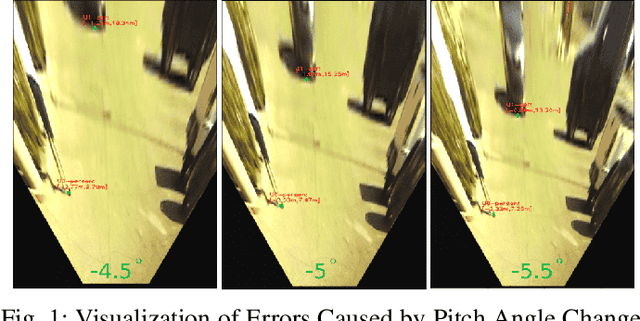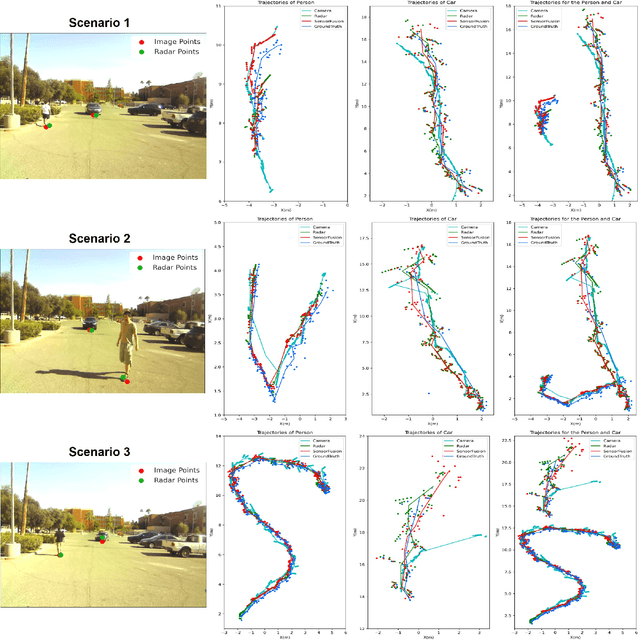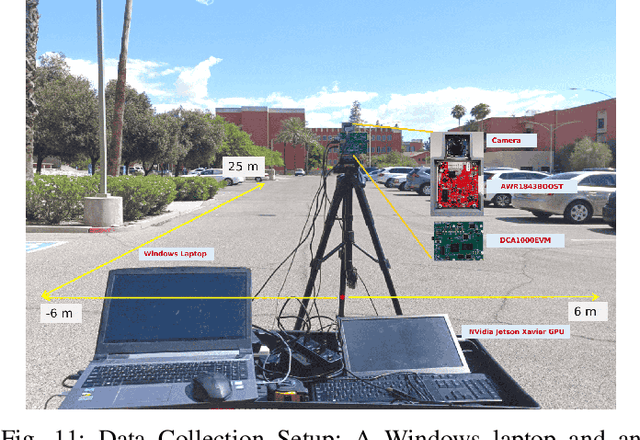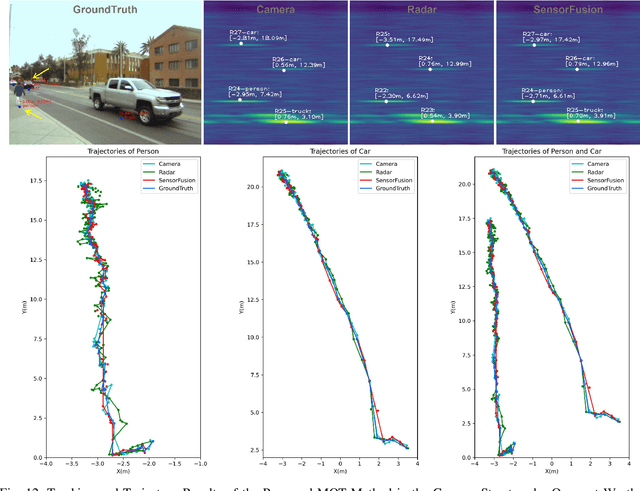Object Detection
Object detection is a computer vision task in which the goal is to detect and locate objects of interest in an image or video. The task involves identifying the position and boundaries of objects in an image, and classifying the objects into different categories. It forms a crucial part of vision recognition, alongside image classification and retrieval.
Papers and Code
Bayesian model selection and misspecification testing in imaging inverse problems only from noisy and partial measurements
Oct 31, 2025Modern imaging techniques heavily rely on Bayesian statistical models to address difficult image reconstruction and restoration tasks. This paper addresses the objective evaluation of such models in settings where ground truth is unavailable, with a focus on model selection and misspecification diagnosis. Existing unsupervised model evaluation methods are often unsuitable for computational imaging due to their high computational cost and incompatibility with modern image priors defined implicitly via machine learning models. We herein propose a general methodology for unsupervised model selection and misspecification detection in Bayesian imaging sciences, based on a novel combination of Bayesian cross-validation and data fission, a randomized measurement splitting technique. The approach is compatible with any Bayesian imaging sampler, including diffusion and plug-and-play samplers. We demonstrate the methodology through experiments involving various scoring rules and types of model misspecification, where we achieve excellent selection and detection accuracy with a low computational cost.
SERVIMON: AI-Driven Predictive Maintenance and Real-Time Monitoring for Astronomical Observatories
Oct 31, 2025Objective: ServiMon is designed to offer a scalable and intelligent pipeline for data collection and auditing to monitor distributed astronomical systems such as the ASTRI Mini-Array. The system enhances quality control, predictive maintenance, and real-time anomaly detection for telescope operations. Methods: ServiMon integrates cloud-native technologies-including Prometheus, Grafana, Cassandra, Kafka, and InfluxDB-for telemetry collection and processing. It employs machine learning algorithms, notably Isolation Forest, to detect anomalies in Cassandra performance metrics. Key indicators such as read/write latency, throughput, and memory usage are continuously monitored, stored as time-series data, and preprocessed for feature engineering. Anomalies detected by the model are logged in InfluxDB v2 and accessed via Flux for real-time monitoring and visualization. Results: AI-based anomaly detection increases system resilience by identifying performance degradation at an early stage, minimizing downtime, and optimizing telescope operations. Additionally, ServiMon supports astrostatistical analysis by correlating telemetry with observational data, thus enhancing scientific data quality. AI-generated alerts also improve real-time monitoring, enabling proactive system management. Conclusion: ServiMon's scalable framework proves effective for predictive maintenance and real-time monitoring of astronomical infrastructures. By leveraging cloud and edge computing, it is adaptable to future large-scale experiments, optimizing both performance and cost. The combination of machine learning and big data analytics makes ServiMon a robust and flexible solution for modern and next-generation observational astronomy.
Radar-Camera Fused Multi-Object Tracking: Online Calibration and Common Feature
Oct 23, 2025



This paper presents a Multi-Object Tracking (MOT) framework that fuses radar and camera data to enhance tracking efficiency while minimizing manual interventions. Contrary to many studies that underutilize radar and assign it a supplementary role--despite its capability to provide accurate range/depth information of targets in a world 3D coordinate system--our approach positions radar in a crucial role. Meanwhile, this paper utilizes common features to enable online calibration to autonomously associate detections from radar and camera. The main contributions of this work include: (1) the development of a radar-camera fusion MOT framework that exploits online radar-camera calibration to simplify the integration of detection results from these two sensors, (2) the utilization of common features between radar and camera data to accurately derive real-world positions of detected objects, and (3) the adoption of feature matching and category-consistency checking to surpass the limitations of mere position matching in enhancing sensor association accuracy. To the best of our knowledge, we are the first to investigate the integration of radar-camera common features and their use in online calibration for achieving MOT. The efficacy of our framework is demonstrated by its ability to streamline the radar-camera mapping process and improve tracking precision, as evidenced by real-world experiments conducted in both controlled environments and actual traffic scenarios. Code is available at https://github.com/radar-lab/Radar_Camera_MOT
Beat Detection as Object Detection
Oct 16, 2025Recent beat and downbeat tracking models (e.g., RNNs, TCNs, Transformers) output frame-level activations. We propose reframing this task as object detection, where beats and downbeats are modeled as temporal "objects." Adapting the FCOS detector from computer vision to 1D audio, we replace its original backbone with WaveBeat's temporal feature extractor and add a Feature Pyramid Network to capture multi-scale temporal patterns. The model predicts overlapping beat/downbeat intervals with confidence scores, followed by non-maximum suppression (NMS) to select final predictions. This NMS step serves a similar role to DBNs in traditional trackers, but is simpler and less heuristic. Evaluated on standard music datasets, our approach achieves competitive results, showing that object detection techniques can effectively model musical beats with minimal adaptation.
Structured Universal Adversarial Attacks on Object Detection for Video Sequences
Oct 16, 2025Video-based object detection plays a vital role in safety-critical applications. While deep learning-based object detectors have achieved impressive performance, they remain vulnerable to adversarial attacks, particularly those involving universal perturbations. In this work, we propose a minimally distorted universal adversarial attack tailored for video object detection, which leverages nuclear norm regularization to promote structured perturbations concentrated in the background. To optimize this formulation efficiently, we employ an adaptive, optimistic exponentiated gradient method that enhances both scalability and convergence. Our results demonstrate that the proposed attack outperforms both low-rank projected gradient descent and Frank-Wolfe based attacks in effectiveness while maintaining high stealthiness. All code and data are publicly available at https://github.com/jsve96/AO-Exp-Attack.
A Multi-Modal Neuro-Symbolic Approach for Spatial Reasoning-Based Visual Grounding in Robotics
Oct 30, 2025Visual reasoning, particularly spatial reasoning, is a challenging cognitive task that requires understanding object relationships and their interactions within complex environments, especially in robotics domain. Existing vision_language models (VLMs) excel at perception tasks but struggle with fine-grained spatial reasoning due to their implicit, correlation-driven reasoning and reliance solely on images. We propose a novel neuro_symbolic framework that integrates both panoramic-image and 3D point cloud information, combining neural perception with symbolic reasoning to explicitly model spatial and logical relationships. Our framework consists of a perception module for detecting entities and extracting attributes, and a reasoning module that constructs a structured scene graph to support precise, interpretable queries. Evaluated on the JRDB-Reasoning dataset, our approach demonstrates superior performance and reliability in crowded, human_built environments while maintaining a lightweight design suitable for robotics and embodied AI applications.
Kinematic Analysis and Integration of Vision Algorithms for a Mobile Manipulator Employed Inside a Self-Driving Laboratory
Oct 21, 2025Recent advances in robotics and autonomous systems have broadened the use of robots in laboratory settings, including automated synthesis, scalable reaction workflows, and collaborative tasks in self-driving laboratories (SDLs). This paper presents a comprehensive development of a mobile manipulator designed to assist human operators in such autonomous lab environments. Kinematic modeling of the manipulator is carried out based on the Denavit Hartenberg (DH) convention and inverse kinematics solution is determined to enable precise and adaptive manipulation capabilities. A key focus of this research is enhancing the manipulator ability to reliably grasp textured objects as a critical component of autonomous handling tasks. Advanced vision-based algorithms are implemented to perform real-time object detection and pose estimation, guiding the manipulator in dynamic grasping and following tasks. In this work, we integrate a vision method that combines feature-based detection with homography-driven pose estimation, leveraging depth information to represent an object pose as a $2$D planar projection within $3$D space. This adaptive capability enables the system to accommodate variations in object orientation and supports robust autonomous manipulation across diverse environments. By enabling autonomous experimentation and human-robot collaboration, this work contributes to the scalability and reproducibility of next-generation chemical laboratories
* International Journal of Intelligent Robotics and Applications 2025
Mask-to-Height: A YOLOv11-Based Architecture for Joint Building Instance Segmentation and Height Classification from Satellite Imagery
Oct 31, 2025Accurate building instance segmentation and height classification are critical for urban planning, 3D city modeling, and infrastructure monitoring. This paper presents a detailed analysis of YOLOv11, the recent advancement in the YOLO series of deep learning models, focusing on its application to joint building extraction and discrete height classification from satellite imagery. YOLOv11 builds on the strengths of earlier YOLO models by introducing a more efficient architecture that better combines features at different scales, improves object localization accuracy, and enhances performance in complex urban scenes. Using the DFC2023 Track 2 dataset -- which includes over 125,000 annotated buildings across 12 cities -- we evaluate YOLOv11's performance using metrics such as precision, recall, F1 score, and mean average precision (mAP). Our findings demonstrate that YOLOv11 achieves strong instance segmentation performance with 60.4\% mAP@50 and 38.3\% mAP@50--95 while maintaining robust classification accuracy across five predefined height tiers. The model excels in handling occlusions, complex building shapes, and class imbalance, particularly for rare high-rise structures. Comparative analysis confirms that YOLOv11 outperforms earlier multitask frameworks in both detection accuracy and inference speed, making it well-suited for real-time, large-scale urban mapping. This research highlights YOLOv11's potential to advance semantic urban reconstruction through streamlined categorical height modeling, offering actionable insights for future developments in remote sensing and geospatial intelligence.
Reliable Robotic Task Execution in the Face of Anomalies
Oct 27, 2025Learned robot policies have consistently been shown to be versatile, but they typically have no built-in mechanism for handling the complexity of open environments, making them prone to execution failures; this implies that deploying policies without the ability to recognise and react to failures may lead to unreliable and unsafe robot behaviour. In this paper, we present a framework that couples a learned policy with a method to detect visual anomalies during policy deployment and to perform recovery behaviours when necessary, thereby aiming to prevent failures. Specifically, we train an anomaly detection model using data collected during nominal executions of a trained policy. This model is then integrated into the online policy execution process, so that deviations from the nominal execution can trigger a three-level sequential recovery process that consists of (i) pausing the execution temporarily, (ii) performing a local perturbation of the robot's state, and (iii) resetting the robot to a safe state by sampling from a learned execution success model. We verify our proposed method in two different scenarios: (i) a door handle reaching task with a Kinova Gen3 arm using a policy trained in simulation and transferred to the real robot, and (ii) an object placing task with a UFactory xArm 6 using a general-purpose policy model. Our results show that integrating policy execution with anomaly detection and recovery increases the execution success rate in environments with various anomalies, such as trajectory deviations and adversarial human interventions.
Probe-based Fine-tuning for Reducing Toxicity
Oct 24, 2025Probes trained on model activations can detect undesirable behaviors like deception or biases that are difficult to identify from outputs alone. This makes them useful detectors to identify misbehavior. Furthermore, they are also valuable training signals, since they not only reward outputs, but also good internal processes for arriving at that output. However, training against interpretability tools raises a fundamental concern: when a monitor becomes a training target, it may cease to be reliable (Goodhart's Law). We propose two methods for training against probes based on Supervised Fine-tuning and Direct Preference Optimization. We conduct an initial exploration of these methods in a testbed for reducing toxicity and evaluate the amount by which probe accuracy drops when training against them. To retain the accuracy of probe-detectors after training, we attempt (1) to train against an ensemble of probes, (2) retain held-out probes that aren't used for training, and (3) retrain new probes after training. First, probe-based preference optimization unexpectedly preserves probe detectability better than classifier-based methods, suggesting the preference learning objective incentivizes maintaining rather than obfuscating relevant representations. Second, probe diversity provides minimal practical benefit - simply retraining probes after optimization recovers high detection accuracy. Our findings suggest probe-based training can be viable for certain alignment methods, though probe ensembles are largely unnecessary when retraining is feasible.
 Add to Chrome
Add to Chrome Add to Firefox
Add to Firefox Add to Edge
Add to Edge